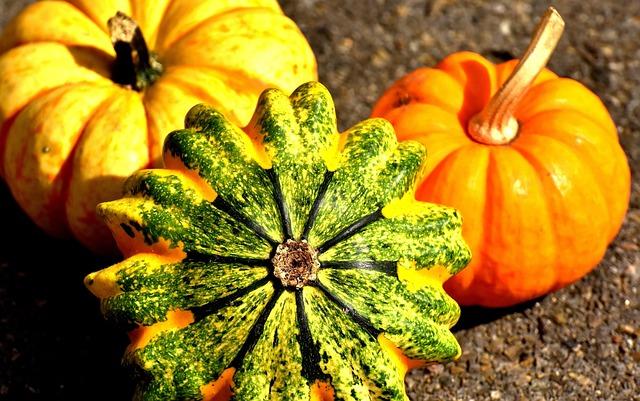Brazil’s orange crop forecast has been revised downward to 306.7 million boxes, according to the latest report from industry sources published by FreshPlaza. This adjustment reflects challenging weather conditions and other factors impacting yield projections in one of the world’s leading orange-producing countries. The reduction signals potential implications for the global citrus market, as Brazil remains a key supplier of oranges and orange juice exports.
Brazil Orange Crop Forecast Revised Downward Impact on Global Citrus Market and Pricing Trends
The latest revision to Brazil’s orange crop forecast signals a significant adjustment in the global citrus landscape, with the estimate now reduced to 306.7 million boxes. This downward revision stems from adverse weather conditions and pest pressures that have impacted yields across key growing regions. As the world’s largest orange producer, Brazil’s output plays a pivotal role in shaping global supply and market dynamics, affecting everything from juice production to fresh fruit availability. Industry analysts predict that this contraction will amplify price volatility and put upward pressure on citrus product prices worldwide.
Market implications include:
- Reduced export volumes from Brazil, tightening global supply chains.
- Potential surge in demand and pricing for alternative citrus producers such as the U.S. and Spain.
- Increased competition for premium juice concentrate supply, influencing beverage manufacturers.
| Region | Crop Forecast (Million Boxes) | Year-over-Year Change |
|---|---|---|
| Brazil | 306.7 | -5.8% |
| United States | 66.0 | +2.4% |
| Spain | 48.5 | -1.2% |
Key Factors Behind Production Decline Weather Challenges and Pest Infestations
Unfavorable weather conditions played a significant role in the recent downturn of Brazil’s orange production. Prolonged periods of unseasonal rainfall and unexpected frost events severely affected fruit development across key producing regions. These erratic climate patterns disrupted flowering cycles, leading to reduced fruit set and overall lower yields. Additionally, high humidity levels created an ideal environment for pests and diseases to thrive, exacerbating the crop’s vulnerability during critical growth phases.
Compounding weather-related issues, outbreaks of major pests such as the citrus leafminer and the Asian citrus psyllid intensified pressure on groves. Farmers reported increased difficulty in managing infestations despite the intensified use of integrated pest management strategies. Below is a snapshot of the estimated pest impact on production in major Brazilian states:
| State | Pest Pressure Level | Estimated Yield Loss (%) |
|---|---|---|
| SĂŁo Paulo | High | 17% |
| Mina Gerais | Moderate | 10% |
| Paraná | High | 15% |
- Increased pesticide use has raised production costs, squeezing farmer margins.
- Quarantine measures slowed fruit processing and export timelines.
- Localized crop losses have limited the availability of premium fruit grades.
Strategic Recommendations for Growers Enhancing Crop Resilience and Optimizing Harvest Timing
Facing a downward revision in Brazil’s orange crop forecast, growers must adopt adaptive strategies to bolster tree resilience against climatic uncertainties while ensuring optimal fruit maturity. Emphasizing soil health management through organic amendments and balanced fertilization can improve root strength, helping trees better withstand drought and pest pressures. Furthermore, integrating technology-driven monitoring systems, such as drone surveillance and IoT soil sensors, enables real-time crop condition assessments, allowing timely interventions that preserve fruit quality and yield.
To optimize harvest timing amidst fluctuating production volumes, farmers should utilize phenological models combined with localized weather forecasts to predict peak ripeness more accurately. Key recommendations include:
- Implement staggered harvesting to avoid market glut and enhance fruit quality consistency.
- Improve irrigation scheduling using precision tools that maximize water efficiency during critical fruit development stages.
- Adopt integrated pest management (IPM) practices to reduce chemical use and promote ecological balance.
| Strategy | Benefit | Implementation Tips |
|---|---|---|
| Soil Health Enhancement | Improved root growth and stress tolerance | Use cover crops and organic composts |
| Phenological Modeling | Better harvest timing prediction | Combine weather data with fruit development stages |
| Precision Irrigation | Water savings and optimized growth | Install moisture sensors and automate irrigation |
The Way Forward
The revised forecast of Brazil’s orange crop to 306.7 million boxes underscores the challenges facing the nation’s citrus industry this season. Factors such as adverse weather conditions and pest pressures have contributed to the downward adjustment, signaling potential impacts on both domestic markets and export volumes. Stakeholders will be closely monitoring developments as producers adapt to these conditions, with implications for supply chains and global orange juice prices. Further updates are expected as the harvest progresses.




